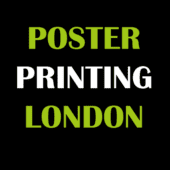The Artistry of Alphonse Mucha: Master of Art Nouveau Posters
Alphonse Mucha, a name synonymous with Art Nouveau, revolutionized the world of graphic design in the late 19th and early 20th centuries. His work, characterized by its intricate details, organic forms, and elegant femininity, became iconic, setting a standard for the Art Nouveau movement. Mucha’s posters, in particular, encapsulated the essence of this artistic style, influencing generations of artists and designers.
Early Life and Influences
Born in 1860 in the small town of Ivančice, Moravia, in what is now the Czech Republic, Mucha showed an early talent for drawing. His passion for art led him to Vienna and later Munich, where he studied at prestigious art academies. However, it was in Paris, the artistic hub of Europe, that Mucha’s career truly flourished.
Mucha arrived in Paris in 1887 and quickly immersed himself in the vibrant art scene. He was particularly influenced by Symbolism and the decorative arts, which later became hallmarks of his work. Financially strained, Mucha worked as an illustrator for various magazines and advertising firms. This period honed his skills in graphic design, which would later define his career.
The Breakthrough: Gismonda
Mucha’s breakthrough came in 1894 when he was commissioned to create a poster for the play “Gismonda,” starring the famous actress Sarah Bernhardt. This commission marked the beginning of Mucha’s rise to fame. The poster’s design, with its elongated figures, sinuous lines, and lush, decorative elements, captivated the public. Bernhardt was so impressed that she signed Mucha to a six-year contract, during which he created numerous posters, stage sets, and costumes for her productions.
Defining Art Nouveau
Mucha’s posters became the epitome of the Art Nouveau style, which emphasized natural forms, curvilinear shapes, and intricate patterns. His works often featured idealized, ethereal women surrounded by flowers, vines, and other natural elements. This style, referred to as “le style Mucha,” was characterized by its harmony, elegance, and a sense of fluid movement.
His most famous works include the “The Seasons” series (1896), “Job Cigarettes” (1898), and “The Slav Epic” (1912-1926). Each piece showcases Mucha’s masterful use of color, composition, and ornamental detail, blending fine art with commercial appeal.
Legacy and Impact
Mucha’s influence extended beyond his posters. He was a versatile artist, creating jewelry, textiles, and interior designs, all infused with the Art Nouveau aesthetic. His work not only popularized the movement but also democratized art by making it accessible to the general public through posters and advertisements.
Despite the eventual decline of Art Nouveau, Mucha’s impact endured. His style influenced the development of graphic design and poster art throughout the 20th century and continues to inspire contemporary artists and designers. Today, Mucha is celebrated as a pioneer who blurred the lines between commercial and fine art.
Conclusion
Alphonse Mucha’s contribution to the Art Nouveau movement cannot be overstated. His posters, with their unique blend of artistic beauty and commercial function, transformed the landscape of graphic design. Mucha’s ability to capture the spirit of his time while creating timeless works of art has cemented his legacy as a master of the Art Nouveau style. His work continues to captivate and inspire, a testament to the enduring power of his artistic vision.
